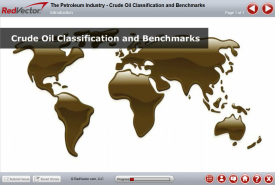
The Petroleum Industry – Crude Oil Classification and Benchmarks
Fluctuations in the price of oil triggered the debate regarding the level of world oil reserves, and the capacity to meet future energy demand has taken on a new impetus. This has led to reinvestigation of the methods of crude oil classification and classification of reserves. For the purpose of the course, we’ll define petroleum as a naturally occurring mixture of hydrocarbons, generally in a liquid state (that may also include compounds of sulfur, nitrogen, oxygen, metals, and other elements) which occurs in sedimentary rock deposits throughout the world. However, the definition of petroleum-associated materials has been varied, unsystematic, diverse, and often archaic. It is only recently that some attempt has been made to define these materials in a meaningful manner. Thus, it is not surprising that attempts to classify petroleum have also evolved. In this course we will review these methods and present them to you for further consideration in terms of pricing strategies.
Posted by arrangement with 336007 Copyright © 2011. All rights reserved.
Course Details
Learning Objectives
At the end of this course, you will be able to:
- Discuss the elements that make up worldwide crude oil economics
- Identify the attributes involved in classifying crude oil
- Define the criteria for classifying crude oil reserves
- Describe the global crude oil benchmarks
Specs
| Course Level | Fundamental |
| Languages | English |
| Compatibility | Audio, MobileReady |
Demos + Pricing
Learn more about our courses, get pricing, and see our platform.











